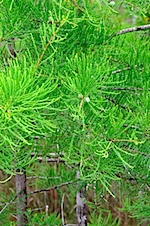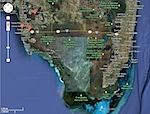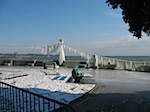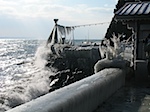Well, we’ve let some time elapse since posting anything here, so herewith, a short summary of events since Christmas.
Anne and Emil and the grandkids came down to Florida for Christmas week and spent it in a rental out at Fort Myers Beach. We had Christmas Day at Dorothy’s place in Estero and did some fun trips with them.
Nancy Connery loaned us her place in Boca Grande for the first ten days of January and we got in some good beach walking and touring the town in the electric golf cart. Boca is small and pretty isolated from major stores and cities and towns. But it has fine beaches and, good boating access to Pine Island Sound. You’re apt to rub elbows with one of the Bush clans or their familiars, which can be viewed anyway you care to take it. An undeniably nice place.
Then we headed north to San Antonio (that’s Florida) for a few days visit with Ellen Peterson. Ellen had kindly agreed to let us park the car in her carport while we went off to Switzerland to see the other grandkids, the doctors and to deal with all those other obligations that build up.
In Switzerland we had rented a nice apartment in Eysins; It was odd living a few kilometers from our place in Gingins, which is rented to others. But we had reunions with a number of friends, ate all the things we can’t get here with the same flavors: think fondue, raclette, etc. We spent a week in the chalet the kids rent in Morillon in France, part of the Grand Massif, with lovely sunny weather, card games with the grandkids, and time to visit with Marc and Anke.
But the month we were there also included some of the coldest weather Switzerland has had for decades, with temperatures down to -20 C° ( -4 F°) many nights, and worst of all, with a howling, blustery freezing wind from the northeast, locally known as the bise. Usually it blows for 1, 3, 5 or sometimes 7 days; this year it blew for two weeks, and we got tired of it hammering at the windows and doors.
It did produce some spectacular scenes, with the spray from the surf on Lac Léman breaking and freezing on everything in reach along the quais; a car in Versoix ended up coated with 2″ – 3″ of ice.
We returned to Florida February 21, spent a few days with Ellen, then got back into the swing of our homeless, live-out-of-your-car existence (though in case you’re wondering, we haven’t spent a night IN the car yet…..).
Spent two days in Sarasota, which everyone has been telling us we had to do as it is the most European (which we think means you can get good expresso) place in Florida. It is charming, and has some interesting places:
The John and Mabel Ringling Museum. This exceeded our expectations in some unexpected ways:
- The art museum was a hodge-podge, gorgeously laid out, and with a few treasures; its grounds recall San Simeon.
- The Ringling “home” (affectionately called CA’ D’ZAN MANSION) is a splendid example of nouveau riche, and lots of fun to visit.
- But the prize was the Circus Museum; this is worth the price of admission all on its own. Those of you who have read Water for Elephants or ever attended a circus in the 50’s can perhaps imagine trying to present a history of the circus in the US. There is a LOT more to it than lions and sexy trapeze artists and the side-show, and this is a fine place to learn it. In particular, there is a marvellous scale model of a big-top circus (photos) covering a space 15 x 40 feet and in exquisite detail. Go see it.
The Marie Selby Botanical Gardens. Fascinating place specializing in epiphytes (that’s orchids and their cousins to you and me), beautifully arranged and displayed, and on a lovely peninsula right next to the historic district of Sarasota.
Sarasota undoubtedly has a great deal more to offer in cultural terms; we weren’t in a culture-consumption mode so might have to come back later, one day.
On the way out of town we visited briefly with an aging friend from Small Point. She has mild dementia and worried she wouldn’t recognize us when we arrived, but she did and we had a good visit. She always favored male visitors, so I made sure to wear shorts…..
Next stop, Casey Key, between Venice and Sarasota. This very long narrow key has real estate far sale running from the high 6 figures into the $ 20 M range; think Stephen King, for example, and Tom Hanks. Tom’s place is actually right down at the south end, where the Key ends at the Venice Inlet and Jetty with a very nice public park which gets a lot of use.
cozy little condo unit at the Gulf to Bay Club, located in a rather unpromising motel and condo zone right over the bridge onto Casey Key at Nokomis. (The rest of Casey Key north of this zone is VERY exclusively residential).
This turned out to be a great little spot, not least for the company of some of the owners of a couple of the units who had been coming there for north of 30 years and who were extremely welcoming. They were all from Michigan and had done some interesting things and were just as interested to hear our various tales. One of them was just about to go off on a National Geographic-led tour of Cuba.
We still had a week to go before heading off to our rental house in the Isles of Capri, just north of Marco Island. At the last minute, we discovered we could join Katie’s cousin Brookie Chandler’s husband on a delivery trip of his 50 foot motor yacht from Hilton Head to Fort Lauderdale. As we couldn’t make it to HH in time for the departure, we arranged to meet John and his skipper Eric Norman at Fernandina Beach on Amelia Island, right on the Florida-Georgia border. Having been through there on the trip south in December, we knew where to find them at the marina.
To get there meant renting a one-way car from Fort Myers, and we took two days to do the drive, spending the night in Ocala. This was surprising and lovely country. Driving north and inland through this part of Florida you find hills, forests, agriculture, and in the area around Ocala, a vast thoroughbred horse industry; the Wikipedia article sums it up:
In 1956, the Ocala area Thoroughbred industry received a boost when Needles became the first Florida-bred to win the Kentucky Derby. In 1978, Marion County-bred and -raised Affirmed won the Triple Crown. Today, Marion County is one of the major thoroughbred centers of the world, with over 1,200 horse farms in total and about 900 thoroughbred farms totaling some 77,000 acres (310 km2). Ocala is well known as the horse capital of the world,[9] one of only five cities (four in the USA and one in France) permitted under Chamber of Commerce guidelines to use this title based on annual revenue produced by the horse industry. There are some 44,000 jobs created by the breeding, training and related support brought about by the equine industry that generates over $2.2 billion in annual revenue. Ocala and “Postime Farms” also play host to one of the largest horse shows in the country. H.I.T.S or “Horses in the Sun” is a Dressage/Jumper event lasting about two months and brings with it some 6 to 7 million dollars to the local Marion county economy each year. There are over 100 different breeds aside from thoroughbreds including the Tennessee Walker, Paso Fino, Morgans, SaddleBreds, Drafts, and the American Quarter Horse. Other equine events in the area include cowboy mounted shooting by the Florida Outlaws, as well as endurance rides, barrel races, “extreme” cowboy events, jumper shows, trick shows, parades, draft pulls, and more.
There were horse ranches for mile upon mile, with the long white board fences one associates more with Kentucky.
We made the rendezvous at Fernandina Beach, loaded up our gear and spent the night alongside and headed south down the Intracoastal Waterway (ICW), aka, fondly and/or pejoratively, The Ditch. The first two miles were the most nerve-wracking, with the tide at dead low and the fathometer telling us we were little short of putting the propellors in the mud. Admire the sailboat way up on the bank in the linked photos.
After that, it went smoothly, if often slowly; the Sarah Brooks pushes up a huge wake at speed so care is required to be sure it doesn’t cause harm. Along the way we had dolphins often, a few manatees, gorgeous weather, comfortable marinas (we had no interest in running at night in the ICW!). In the sections before reaching Hobe Sound and Palm Beach, there were many miles of marshes and mangrove-lined shores.
That all changed at Palm Beach, and the condo canyons. Passing through Hobe Sound the display of egregious excess (houses of 5 and 10,000 square feet) made it much less appealing. At the Lake Worth Inlet, before Palm Beach, we went outside and had an uneventful ride through medium chop at cruising speed (10 – 14 knots) to Fort Lauderdale.
The GPS track of the trip down The Ditch may be seen here.
Isles of Capri:
Marco Island (south of Naples, and on the northern edge of the 10,000 Islands and Everglades) is densely developed and rather resembles a suburb of, say, San Diego. But it has a terrific public beach at Tigertail Beach. It’s a Collier County Parks beach, and like nearly every other county and state park in Florida we have visited, very well-managed and organized. The appalling wall of condo and hotel towers along the beach south of it reduce its appeal when you look the wrong way, but as everywhere else, the birds and fish abound and all is well-maintained; there were lots of people and no outrageous behavior or noise.
The Isles of Capri is a funny little place just inland of Marco Island, and very much another world. Initially developed in the mid-fifties, it’s a backwater in many ways. People are welcoming, the local fish shack cooks some of the best-prepared fish we have had all year and people walk and bike everywhere. Water access by boat or kayak is easy, and the dolphins come right up alongside of you when you’re kayaking (at least they did for us, and we hadn’t paid extra for that either….).
We’d rented a house for ten days, and discovered it was owned by a young guy who hadn’t the SLIGHTEST idea of how to make a place warm, welcoming or comfortable: it was living in one of those “Model Units” you see advertised outside dreadful housing developments: show-room furniture, inadequate selection of kitchen equipment, and less welcoming than many motel rooms we’ve been in. We had a fine time, and the price was right.
While were we were staying here we took a drive over along Highway 41 and drove up the “scenic” drive up through the Fakahatchee Strand Preserve State Park. There is more explanation at these sites about the significance of this site:
Fakahatchee Strand Preserve State Park Friends of Fakahatchee
We reached the western end of the Preserve and took a shot at departing via a set of old roads through a failed developed which has been purchased by the state. It was a funny adventure and a drive through a corner of the country which not everyone might see.
Here’s a link to a Google Maps view; look at it in the Satellite view
Turns out that appalling failed development of 57000 acres of land has fortunately been purchased by the State to add into the Picayune State Forest.
As we write now, we are back in Estero, at the home of Dorothy Cameron. We’re baby-sitting her cats while she is in New England babysitting her grand-daughter.
She returns 19 April (Patriots Day for all you Massachusetts residents) and we’ll begin the trek northwards, like good little snowbirds, on the 21st.
Dorothy has saved our bacon this season. She’s taken us in at odd times, at the last minute, or when our plans were off by a day; she’s let us store baggage in the garage, given us the run of the pool and facilities in her community here, and definitely made us feel at home. For a couple of geezers, off on a Year of Living Homelessly, she has been a godsend.
We’ve had a visit with my cousin Dave Wheatland, spotted Swallowtail Kites and listened to Chuck-will’s Widow calling in the evening.
The local tomatoes and produce are wonderful, and the succession of 85° days and 62° nights, with reasonable humidity and nice breezes, has been a delight.
Big Cypress National Preserve and South Florida protected areas
Today (14 April) we drove down to the Big Cypress National Preserve for an explore. It was a cloudy day, so not very hot, and with occasional drizzle. The grey light offset the colors on the birds and cypress trees beautifully. We stopped at the Visitor Center and got some good suggestions about which loop roads were most interesting at this season. So we set off on a loop beginning at Monroe Station. It runs through a series of strands and hammocks over a multitude of culverts which help ensure the flow of water through the swamp. It’s the end of the dry season, so critters congregate at the water holes. Also, it’s spring, and the cypress are beginning to come back into leaf, which is a glorious sight; they are covered with that new pale, luminescent green foliage that trees get, and in the midst of the swamps and marshes, they really stand out.
We saw: Great Crested Flycatchers, many alligators (small and large), Green Herons, Tri-Color Herons, Roseate Spoonbills, Wood Storks.
Together with the Everglades National Park and a series of other areas under varying degrees of protection, the Preserve forms a critical part of the south Florida ecosystem. But as usual, and increasingly in this period of anti-anything-Federal, there are controversies over its use. As the Superintendent of the Preserve points out, every national resource area operates under different guidelines; this is even true within the National Park Service, and the trade-offs that are nearly always required to get these areas even established are formidable and often discouraging and are well delineated in this article.
The the protected areas in south Florida has many pieces and agencies involved: (I’m pretty sure there are more that I missed)
- Everglades National Park
- Big Cypress National Preserve
- The Fakahatchee Strand (Florida State Park System)
- Ten Thousand Islands National Wildlife Refuge
- Florida Panther National Wildlife Refuge
- Florida Keys National Marine Sanctuary
- Rookery Bay National Estuarine Research Reserve
- Picayune Strand State Forest and Florida State Forest page (the development which is now most of this forest can be seen easily in Google Earth; we drove through it after going through the Fakahatchee Strand and it was a dreadful sight to picture what the development might have become). Here is some history of Florida land scams, including the one we drove through; more here and here.
Nevertheless, some of it works pretty well. We drove through the Loop Road from Monroe Station to Fortymile Bend, both on the old Tamiami Trail, Route 41. The loop is a gravel road and the Preserve has just finished installing dozens of culverts under it to improve the flow of the sheet of water that runs into the Everglades; it’s great so see tax dollars go towards this instead of wars in places where they shouldn’t happen.
We saw a lot of what we’re pretty sure were Great Crested Flycatchers (though it is possible they were Brown-crested Flycatchers, which are known in this area). We also saw a Pileated Woodpecker but not well enough to get a photo.
Along the edge of the road was a large Florida Softshell Turtle.
At one of the culverts there was an astonishing collection of critters and birds.
- Alligators
- Wood Stork
- Ibis (adults and immature)
- Roseate Spoonbills
- Green Herons
- Tri-color Herons
- Great White Egrets
Here are all the photos from this trip.
Well, last outing down here this winter:
We went off this morning to the Audubon Corkscrew Swamp Sanctuary, east of Naples on the Immokalee Road. The history of the place is worth a read. Getting there exposes you to the contrasts and ironies of Florida: heading east on the Immokalee Road from I-75, you pass miles of the classic Florida slash-and-burn development: these wildly improbable developments loom up right and left, with even more wildly improbably names: Gulf Shores Pointe, or something, and we are 20 miles from any salt water. Miromar Beach Club, same; beaches? Out here? Then the land gives way to something more honest, if no less artificial: ranches, farms, quarries. The Corkscrew Sanctuary is preserving something immensely valuable, but the trip out there makes you realize how much was lost along the way.
But, and it’s a big but, this is a special place.
At this time of year the swamp is heavily dried out so there are a few holes with water where the critters all congregate. Birds are nesting, there are young alligators and all the cypress are leafing out.
What we saw:
Red-shouldered hawks – Florida sub-species -. fledglings, Cowbird, Carolina Wren, Pileated Woodpecker, Brown-headed Nuthatch nest, Northern Waterthrush, the usual collection of alligators with young, Black-crowned Night Heron, Egrets and Ibis; tiny tree frog (spotted by a very sharp-eyed 12 year-old: 
; alligators almost getting a raccoon – twice. The forest of cypress is spectacular. Having been through the Big Cypress Preserve and the Fakahatchee Strand stands of Cypress, we can testify that these are clearly special.
This satellite view from Google Maps shows fairly clearly what an island of preservation this are is, with the Corkscrew Regional Watershed zone just to its north (the Audubon Preserve is immediately south of that in the image, though it isn’t labelled on the map).
This image helps place it in context with all the other protected areas of South Florida (it is flag “A” in the image):
So, that’s it for Florida, for this year folks. Trip north starts 21 April with arrival in Small Point by 15 May. We plan to spend a couple of nights in the Lake District south of Orlando, one of which will be with a primary school classmate from Acton whom we saw last fall at the 50th reunion of the Acton-Boxborough High School.
We’ve planned as top at Sapelo Island in Georgia including a tour around its beaches and rivers and historical remains.
Then we’ll head up the lower end of the Delmarva Peninsula to WA DC and Maryland, and make a stop in the NYC area, and will see friends and family in both areas.


Post a Comment